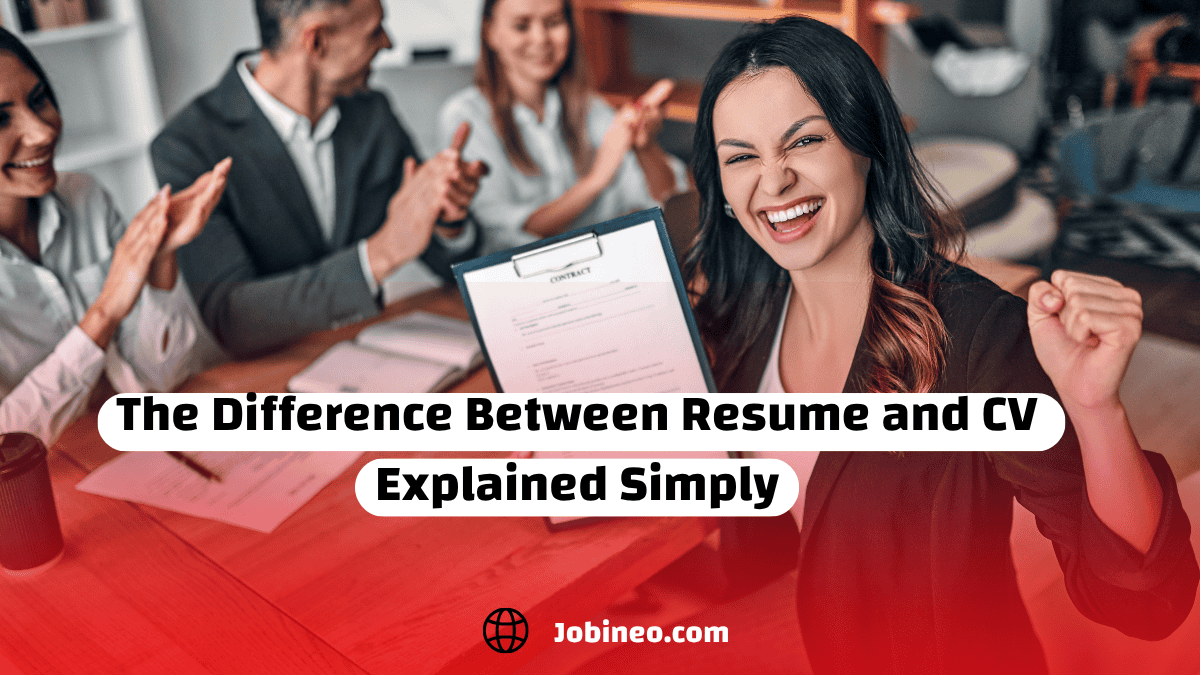The Difference Between Resume and CV Explained Simply

A few months ago, I stumbled across something that still makes me chuckle. I was reading a discussion online, and someone said, “I applied for a role in London and sent my CV, but the recruiter asked for my resume instead. I thought they were the same thing!” Honestly, that confusion is more common than you’d think.
Here’s the thing: “resume” and “CV” are often used interchangeably, but they’re not identical. And especially if you’re applying internationally in 2025, knowing the difference can actually make or break your application.
According to the Society for Human Resource Management (SHRM), nearly 40% of hiring professionals report that applicants get tripped up over which document to send. So yeah, this matters. Let’s break it down in simple, practical terms so you always know what’s expected.
Why the Difference Matters
Both a resume and a CV are basically marketing tools for your career. But here’s the catch: just like you wouldn’t pitch a car the same way you pitch a house, you can’t send the same document for every job.
Sending the wrong one doesn’t just look careless it can signal that you don’t really get the industry or the culture of the country you’re applying in. That small detail could be enough to cost you a callback.
Resume: Short, Sharp, Targeted
A resume is usually 1 or 2 pages. It’s focused on the skills, experience, and achievements that matter for that specific role. Think of it as a “trailer” for your career you want to hook interest, not tell your life story.
CV: Comprehensive and Detailed
A CV (Curriculum Vitae) is longer, often 2–4 pages, sometimes more if you’re in academia. It’s a full record of your professional and educational history. Unlike a resume, a CV isn’t tailored for every job it’s more like a chronicle of everything you’ve done, from research to publications to teaching experience.
Global Differences to Keep in Mind
Geography can make this confusing:
- U.S. & Canada: “Resume” is standard; CVs are mostly for academia or research.
- Europe, Asia, Middle East, Africa: “CV” is the usual term even if it looks like a U.S.-style resume.
- International companies: Check the posting. If they ask for a “resume,” keep it concise. If they ask for a “CV,” expect more detail.
Even small missteps matter. I remember hearing about someone applying in Germany with a one-page resume when the recruiter expected a detailed CV. It wasn’t about qualifications they simply thought her document was “too short.”
Final Takeaway
Think of a resume and CV as siblings they look alike, but they play different roles.
- Resume: Your highlight reel, sharp and focused.
- CV: Your full biography, detailed and complete.
Sending the right one shows professionalism and cultural awareness. In 2025, when employers are sorting through applications faster than ever, this little detail can be the difference between getting noticed and getting passed over.








